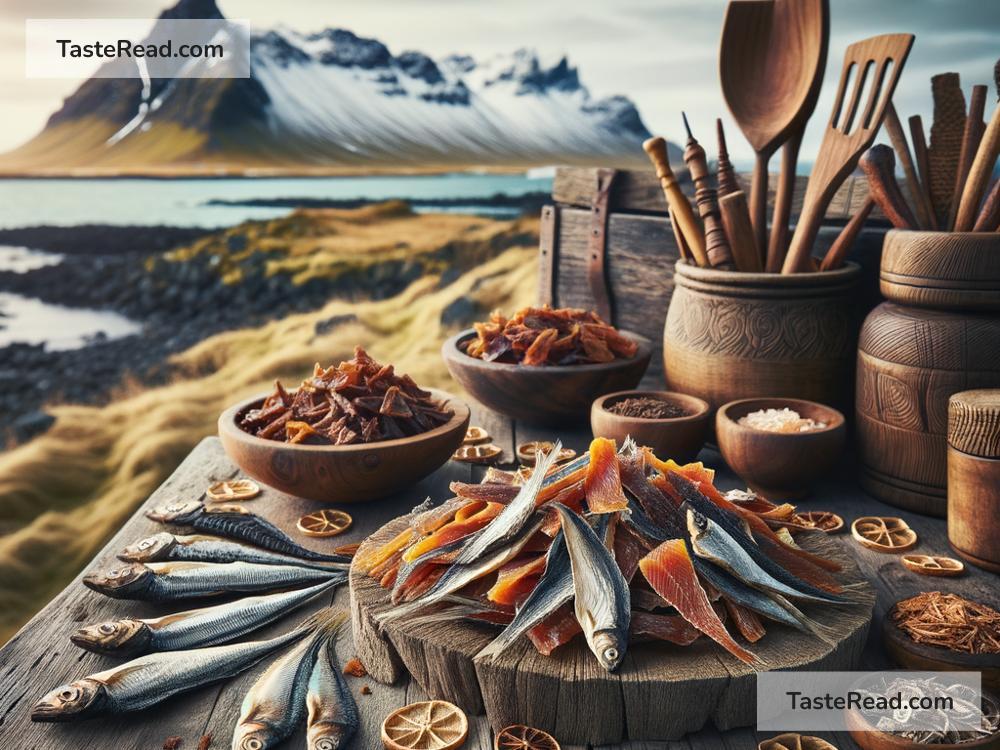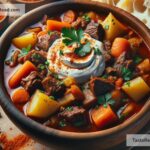Icelandic Dried Fish Snacks: A Taste of Tradition and Survival
In Iceland, a country of dramatic landscapes, towering mountains, icy glaciers, and endless rugged coastlines, life has never been easy. The unique challenges of harsh weather and isolation shaped the lives of Icelanders for centuries, demanding creativity, resilience, and ingenuity to survive. Among the many traditions that grew out of this survival spirit, one stands out: Icelandic dried fish snacks. These thin, chewy pieces of preserved fish are tasty and nutritious—and they carry a fascinating history.
The Need for Preservation
If you imagine Iceland hundreds of years ago, think of dark winters, fierce winds, and limited farmland. For most of Iceland’s history, fishing was one of the main ways people sustained themselves. The cold North Atlantic waters surrounding the island are rich with fish, particularly cod, haddock, and pollock. These plentiful fish not only provided a reliable source of protein but also played a key role in Iceland’s survival when fresh food wasn’t available.
Without refrigeration or modern freezing methods, Icelanders had to rely on old-fashioned methods of preservation to store food for the long winters. Drying fish became a solution to this problem. By carefully removing water from fish, Icelanders were able to extend its shelf life drastically, ensuring they had food to fall back on when times were tough.
The Process of Drying Fish
The process of drying fish in Iceland was simple and built around the natural environment. Fresh fish was cleaned and filleted, then hung outdoors on wooden racks, known as “hjallar,” where it would slowly air-dry. The constant cold wind, combined with the low humidity and chilly temperatures, provided perfect conditions for drying fish without it rotting or spoiling. This technique was so effective that dried fish could last for months—or even years.
The result was “harðfiskur,” which translates to “hard fish” in English. Harðfiskur is hard and slightly chewy, with a concentrated fish flavor. It has been a staple of Icelandic diets for generations, a reliable food source for farmers, fishermen, and families alike. Along with dried fish, Icelanders would pair their meal with butter or even drizzle it with a bit of cod liver oil for extra nutrients.
A Long History of Survival
For centuries, dried fish wasn’t just a snack—it was survival food. Icelanders depended on it during harsh winters and in times of famine or food shortages. It was eaten plain, along with bread, or used in soups and stews to stretch meals further. Dried fish was also crucial for travelers and fishermen who needed portable, lightweight food that would remain edible for long periods.
Consider, for example, the lives of Icelandic seafarers. These men frequently ventured into cold, unforgiving waters to fish or trade, often spending weeks away from home. Fresh food wasn’t an option, so they packed dried fish with them. Its durability made it ideal for travel, and its high protein content kept them strong during physically demanding tasks.
Similarly, farmers working on remote farms relied on harðfiskur to sustain themselves. Farming in Iceland was no easy feat due to the country’s rocky terrain, short growing seasons, and unpredictable weather. Dried fish helped fill the calories that their limited agricultural yields couldn’t supply.
Harðfiskur Today: From Survival Food to Beloved Snack
Fast forward to today, and Icelanders still love harðfiskur. While modern technology has made it easier to store fresh fish or freeze it for long periods, dried fish remains a popular snack, cherished for its tradition, flavor, and healthy qualities. It’s sold in grocery stores and markets across the country, often packaged in small bags for convenience.
Many Icelanders will eat harðfiskur straight out of the bag or spread a touch of butter on it for added richness. The flavor is distinct—slightly salty, mildly fishy, and satisfyingly chewy. What truly makes it unique, however, is its history. Eating harðfiskur is a reminder of Iceland’s past—of the resourceful ways people adapted to their environment and turned a challenging reality into an enduring culinary tradition.
Health Benefits of Dried Fish
Harðfiskur isn’t just a snack with historical importance; it’s also good for you! Dried fish is packed with protein, essential vitamins, and omega-3 fatty acids. It’s low in fat and carbs, making it a healthy choice for anyone looking for a nutritious and filling snack.
Because of its high protein content, harðfiskur is especially popular among athletes and outdoor enthusiasts. It’s also finding fans among tourists who want to sample authentic Icelandic foods during their travels. Many visitors find the chewy texture and strong flavor unusual, but they often leave Iceland with a newfound appreciation for this traditional treat.
A Slice of Iceland’s Soul
Harðfiskur is more than just food; it symbolizes Iceland’s adaptability, resourcefulness, and drive to survive in one of the harshest climates on Earth. What began as a necessity has become a beloved part of Icelandic culture, anchoring modern life to the past in ways that are both meaningful and delicious.
The next time you visit Iceland, be sure to try some harðfiskur for yourself. While you chew on its tough texture and savor the salty taste, think about the generations of Icelanders who depended on dried fish to survive long winters and difficult times. In each bite, you’ll experience a taste of history—a food that kept Iceland going and still brings comfort and pride to its people today.


